Triathlons are an exhilarating test of endurance, strength, and mental fortitude. Whether you’re a fitness enthusiast looking to challenge yourself or a beginner triathlete aiming to cross your first finish line, triathlon training in the USA offers unique benefits.
From diverse terrains to state-of-the-art training facilities, there are plenty of resources to help you succeed. In this guide, we’ll walk you through everything you need to know to start your triathlon training in the USA, from understanding the components to creating a balanced training plan. By the end, you’ll be well-equipped to begin your exciting triathlon journey.
Table of Contents
How to Start Triathlon Training in the USA?
Understanding Triathlon Components & Triathlon Training in the USA
Overview of Swimming, Biking, Running
A triathlon consists of three sequential activities—swimming, biking, and running. Each discipline tests different aspects of physical fitness and requires unique skills and techniques.
- Swimming: This is usually the first leg of a triathlon. It can range from tranquil lake swims to choppy ocean waves. Swimming builds cardiovascular strength and requires a focus on breathing and stroke efficiency.
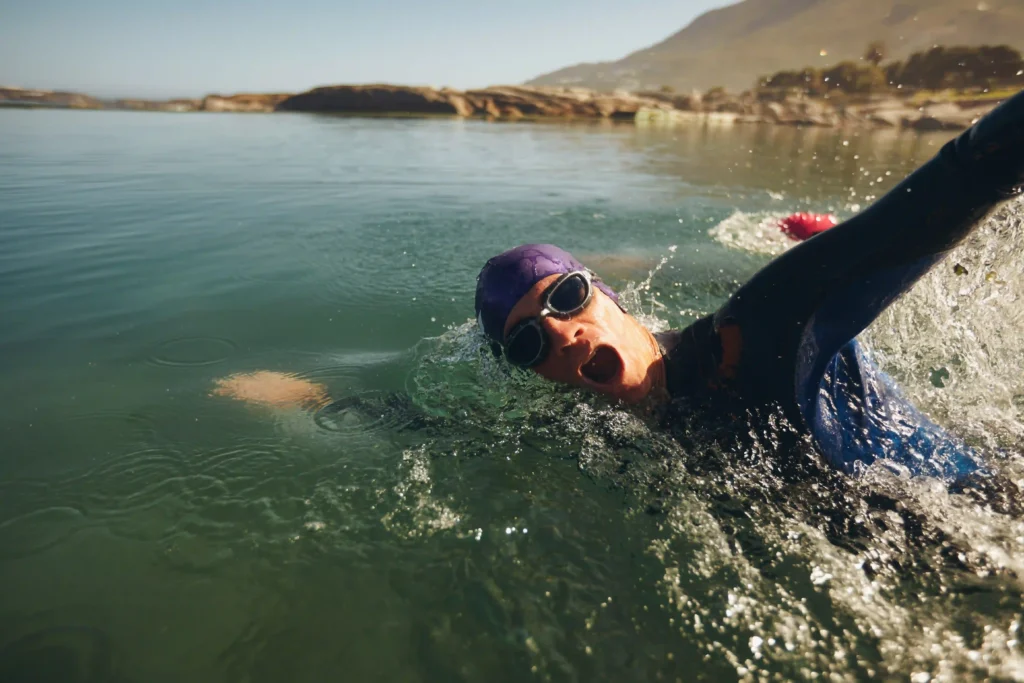
- Biking: Following the swim, you’ll transition to the cycling segment. From winding countryside roads to challenging mountain trails, biking tests your leg strength and stamina.

- Running: The final leg of the race is the run. After swimming and biking, running tests your overall endurance and mental toughness as you push toward the finish line.
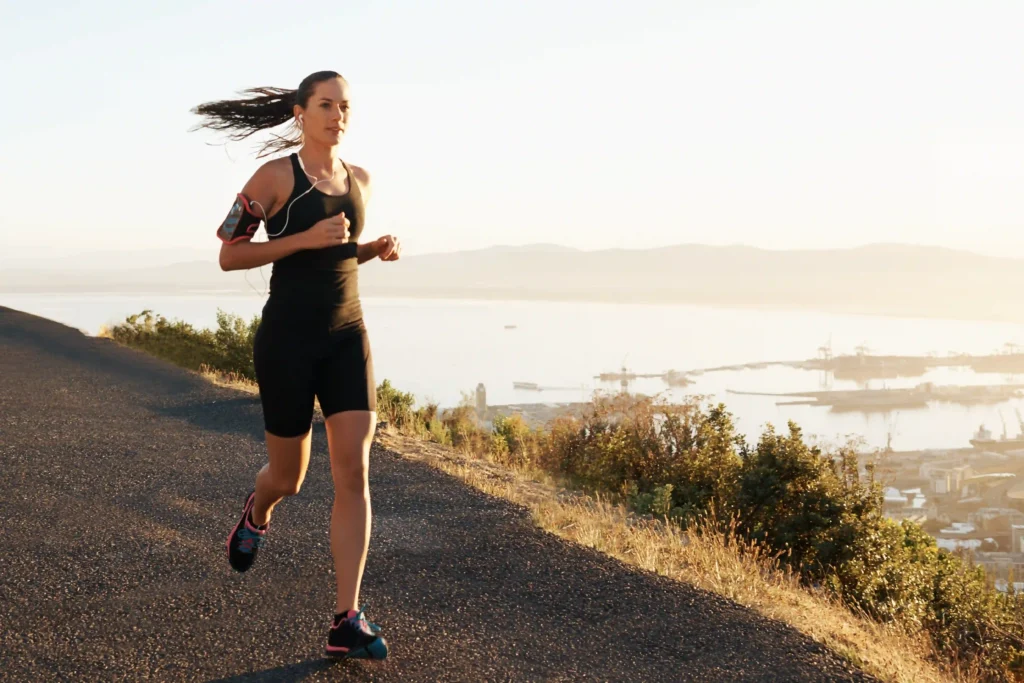
Typical Distances and Formats
Triathlons come in various distances to suit different skill levels:
- Sprint: Generally includes a 750-meter swim, 20-kilometer bike ride, and 5-kilometer run.
- Olympic: Typically features a 1,500-meter swim, 40-kilometer bike ride, and 10-kilometer run.
- Half-Ironman: Consists of a 1.9-kilometer swim, 90-kilometer bike ride, and 21.1-kilometer run.
- Ironman: The ultimate endurance test with a 3.8-kilometer swim, 180-kilometer bike ride, and 42.2-kilometer marathon run.
Creating a Training Plan
Balancing Disciplines in Training
To succeed in a triathlon, it’s essential to balance your training across all three disciplines. Overemphasizing one activity can lead to burnout or injury, while neglecting another can hurt your overall performance.
- Scheduling: Set up a weekly schedule that includes multiple sessions for each discipline. For instance, you might swim on Mondays and Thursdays, bike on Tuesdays and Fridays, and run on Wednesdays and Saturdays.
- Mix it Up: Incorporate a variety of workouts, including endurance sessions, speed intervals, and technique drills.
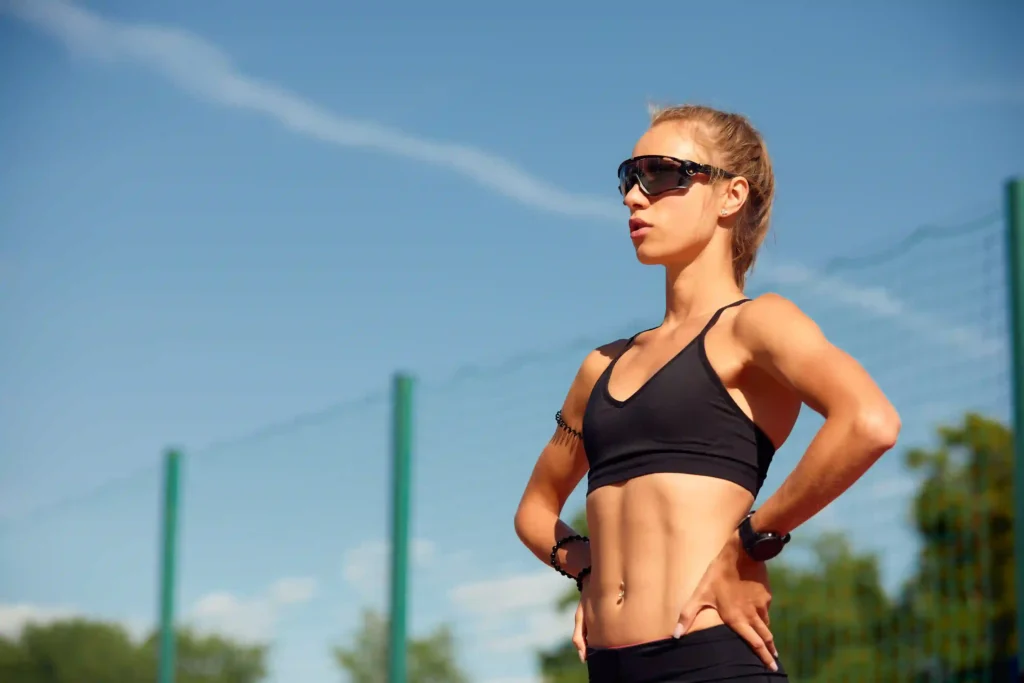
Key Training Milestones
Setting specific milestones can help you track your progress and stay motivated:
- 4 Weeks In: Aim to complete at least 75% of the distances for each leg.
- 8 Weeks In: Increase your endurance sessions to mimic race conditions.
- 12 Weeks In: Focus on brick workouts (back-to-back disciplines) to simulate race transitions.
Essential Gear for Training and Race Day
Gear Needed for Each Segment
Quality gear can make a significant difference in your training and performance on race day:
Swimming:
- Wetsuit (for open-water swims)
- Goggles
- Swim cap
- Pull buoy (for technique improvement)
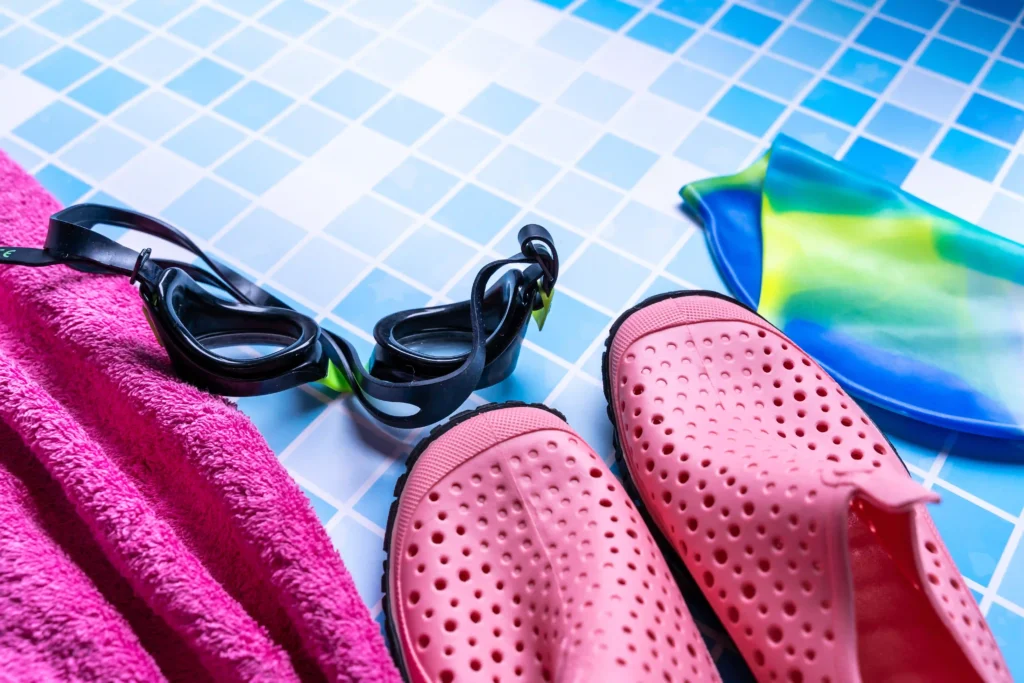
Biking:
- Road or triathlon bike
- Helmet
- Cycling shoes and clipless pedals
- Repair kit (tire levers, spare tube, CO2 inflator)
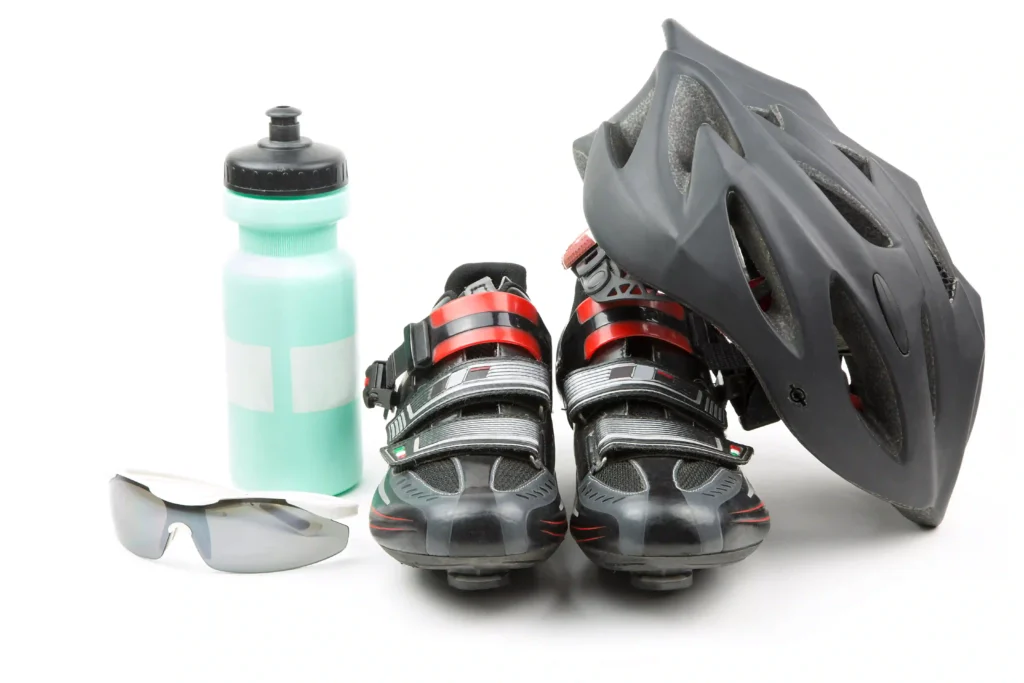
Running:
- Running shoes (suitable for your gait)
- Moisture-wicking apparel
- Race belt (for attaching your bib number)
- Hydration belt or handheld bottle
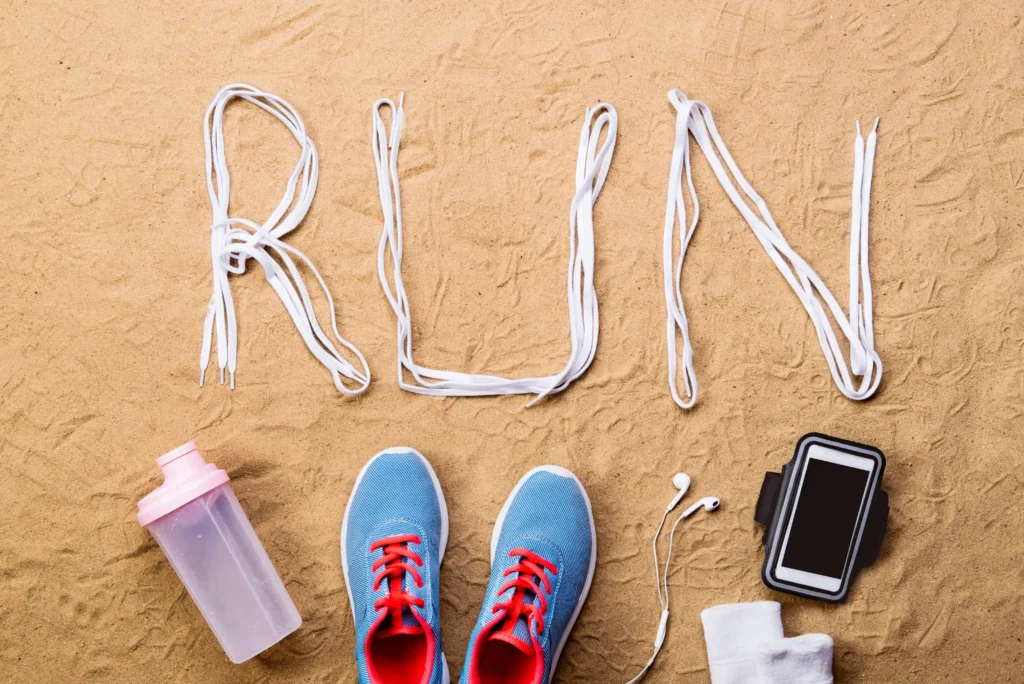
Tips for Race-Specific Preparations
- Transitions: Practice transitioning between activities to reduce your time on race day.
- Gear Check: Ensure all your equipment is in good condition and ready for race day.
- Race Simulation: Participate in smaller races or mock triathlons to acclimate yourself to the race environment.
Nutrition and Recovery Strategies
Importance of Proper Nutrition
Nutrition plays a critical role in your training and performance:

- Before Workouts: Consume easily digestible carbs and proteins to fuel your session.
- During Workouts: Hydrate regularly and consider energy gels or bars for longer sessions.
- After Workouts: Focus on replenishing glycogen stores with a mix of protein and carbs.
Recovery Tips and Techniques
Recovery is just as important as training:
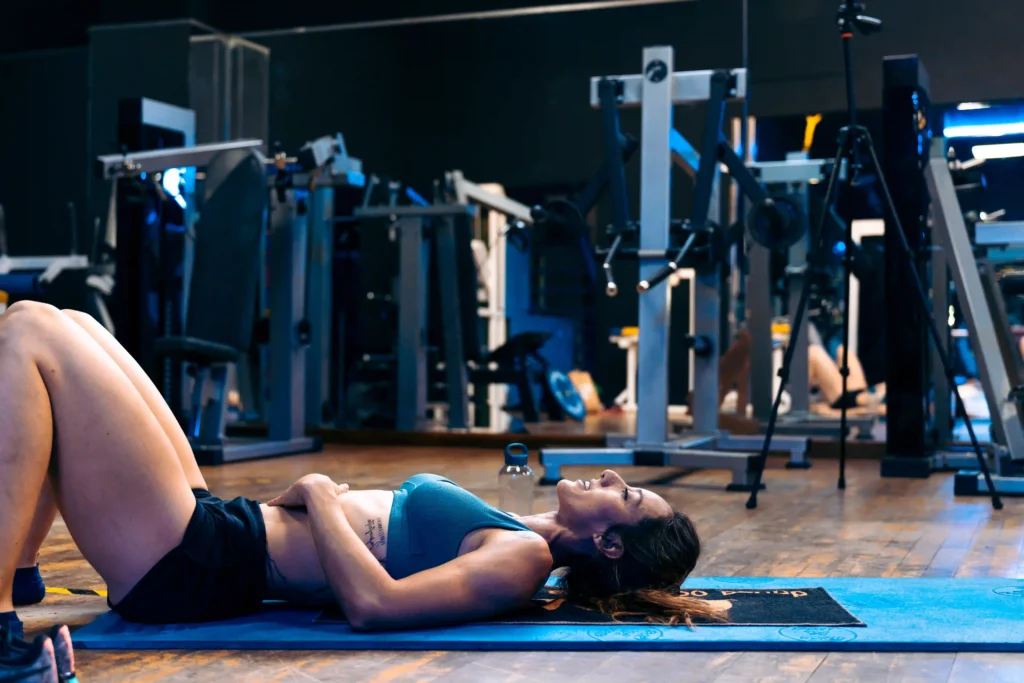
- Sleep: Aim for at least 7-9 hours of quality sleep per night.
- Stretching: Incorporate dynamic stretching before workouts and static stretching afterward.
- Massage: Consider foam rolling or professional massage to relieve muscle tension.
- Rest Days: Schedule regular rest and active recovery days to prevent overtraining.
Conclusion
Training for a triathlon is a rewarding and transformative experience. By understanding the components, creating a balanced training plan, investing in essential gear, and focusing on nutrition and recovery, you’ll be well on your way to crossing the finish line. Ready to take the plunge? Start your training today and join the vibrant community of triathletes across the USA. Happy training.
FAQ and Answers
1. What is a triathlon and what distances are involved?
A triathlon is a multisport event consisting of swimming, cycling, and running in immediate succession. The main triathlon distances are:
- Sprint: 750m swim, 20km bike, 5km run
- Olympic: 1.5km swim, 40km bike, 10km run
- Half Ironman (70.3): 1.9km swim, 90km bike, 21.1km run
- Full Ironman: 3.8km swim, 180km bike, 42.2km run
2. How long does it take to train for a triathlon?
Training duration depends on your current fitness level and the race distance:
- Sprint: 8-12 weeks for beginners
- Olympic: 12-16 weeks
- Half Ironman: 20-24 weeks
- Full Ironman: 24-30 weeks
Consistent training and gradual progression are key to successful preparation.
3. What equipment do I need to start triathlon training in the USA?
Essential equipment includes:
- Swimming: Goggles, swim cap, swimsuit
- Cycling: Bike (road, triathlon, or mountain), helmet, cycling shoes
- Running: Running shoes, comfortable clothing
- General: Water bottle, sunscreen, sports watch/activity tracker
As you progress, you may invest in more specialized gear like wetsuits or triathlon-specific bikes.
4. Where can I find triathlon training groups or clubs in the USA?
To find training groups or clubs:
- Check USA Triathlon’s club finder: www.teamusa.org/usa-triathlon/clubs/find-a-club
- Search for local triathlon clubs on social media platforms
- Visit local bike shops or swimming pools for information on groups
- Use apps like Strava or Meetup to find triathlon training partners
5. What are the best triathlon training locations in the USA?
Popular training locations include:
- San Diego, California: Year-round good weather and varied terrain
- Boulder, Colorado: High-altitude training and strong triathlon community
- Tucson, Arizona: Warm climate and excellent cycling routes
- The Woodlands, Texas: Home to Ironman Texas and great training facilities
- Madison, Wisconsin: Host of Ironman Wisconsin with beautiful training routes
6. How should I structure my triathlon training week?
A basic weekly structure might include:
- 2-3 swims
- 2-3 bike rides
- 2-3 runs
- 1-2 strength training sessions
- 1 brick workout (combining two disciplines, usually bike-run)
- 1 rest day
Adjust based on your experience level, available time, and race goals.
7. What are the best triathlon training plans for beginners in the USA?
Beginner-friendly training plans include:
- USA Triathlon’s training plans: www.teamusa.org/usa-triathlon/training/training-plans
- TrainingPeaks beginner plans: www.trainingpeaks.com
- Triathlete magazine’s beginner plans: www.triathlete.com
Consider working with a certified triathlon coach for personalized guidance.
8. How do I train for open water swimming in the USA?
To prepare for open water swimming:
- Practice in pools with open water simulations (eyes closed, group swims)
- Gradually transition to open water in safe, supervised environments
- Join local open water swim groups for guided practices
- Focus on sighting techniques and navigation skills
- Use USA Triathlon’s open water swim clinics: www.teamusa.org/usa-triathlon/events/sanctioned-events/open-water-swim-clinics
9. What nutrition strategies should I follow for triathlon training in the USA?
Key nutrition strategies include:
- Maintain a balanced diet with adequate carbohydrates, proteins, and healthy fats
- Stay hydrated, especially in hot climates
- Practice race-day nutrition during training
- Consume easily digestible carbs and electrolytes during long workouts
- Refuel with protein and carbs post-workout
Consult a sports nutritionist for personalized advice.
10. How do I prevent injuries during triathlon training?
To prevent injuries:
- Gradually increase training volume and intensity
- Incorporate strength training and flexibility work
- Use proper equipment and ensure correct bike fit
- Listen to your body and allow for adequate rest
- Cross-train to prevent overuse injuries
- Stay hydrated and maintain good nutrition
11. What are the best triathlon races for beginners in the USA?
Beginner-friendly races include:
- New York City Triathlon (Olympic distance)
- Chicago Triathlon (Sprint and Olympic distances)
- Nautica Malibu Triathlon (Classic and Olympic distances)
- St. Anthony’s Triathlon in Florida (Sprint and Olympic distances)
- HITS Triathlon Series (various locations, multiple distances)
Choose races with flatter courses and well-organized support for your first event.
12. How do I balance triathlon training with work and family life in the USA?
To balance training with other commitments:
- Create a structured training plan that fits your schedule
- Wake up early for training sessions
- Use lunch breaks for quick workouts
- Involve family in activities (e.g., bike rides together)
- Utilize indoor training options (treadmills, bike trainers) for time efficiency
- Prioritize quality over quantity in your training sessions
13. What are the best triathlon coaching options in the USA?
Coaching options include:
- One-on-one coaching with a USAT certified coach
- Online coaching platforms like TrainingPeaks or Final Surge
- Group coaching through local triathlon clubs
- Training camps and clinics offered by professional triathletes
- Self-coaching using resources from USA Triathlon and triathlon publications
14. How do I train for triathlons in different climates across the USA?
Adapting to different climates:
- Hot climates: Train early morning or evening, stay hydrated, use indoor options during peak heat
- Cold climates: Invest in proper cold-weather gear, use indoor training facilities, consider a winter training camp in a warmer location
- High altitude: Gradually acclimatize, increase hydration, and adjust expectations for performance
15. What mental training techniques are useful for triathletes in the USA?
Effective mental training techniques include:
- Visualization of race scenarios and successful performances
- Mindfulness and meditation to improve focus
- Goal-setting for both training and racing
- Positive self-talk and affirmations
- Working with a sports psychologist for personalized strategies
Remember, mental preparation is as important as physical training for triathlon success.
